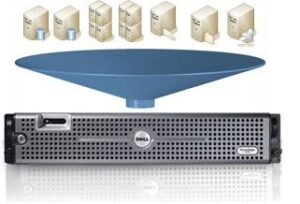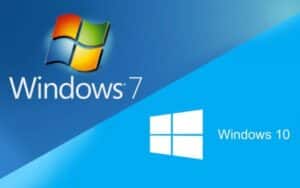 Virtualisation is one of the current buzzwords in the IT world. It is important that decision makers understand the basics of what virtualisation means to them, if only to prevent me having to explain it to every customer for whom we are quoting a server!
Virtualisation is one of the current buzzwords in the IT world. It is important that decision makers understand the basics of what virtualisation means to them, if only to prevent me having to explain it to every customer for whom we are quoting a server!
I’m going to jump straight to the point here, as I know this may be dull to non-techie types, (but I’d encourage you to read on!) – if you run several computers in your office, virtualisation can save you a lot of money and hassle.
Ok here’s how….
What does virtualisation mean then?
Before I explain that, let me get you on track with how things have been done up until now. I’m going to use the example of a server here, however the same technology is applicable to your normal desktop PCs as you will see later. Traditionally on your server, you have the hardware and the operating system. The hardware is the box of kit, the memory, the hard drive and so on. The hardware does nothing without the operating system. In the case of a PC or laptop, the operating system is probably Windows 7, Vista or XP. On a server the operating system might be Windows Server 2008 or Windows Server Small Business Edition. The operating system in the software which brings the hardware to life and gives it a purpose. In a non-virtualised setup, the operating system is installed directly onto the hardware. Nice and simple! Your single, physical server that you can touch and feel, has one operating system on it.
Enter the virtual world… Virtualisation introduces a new component into the traditional hardware / operating system mix, this is known in the business as the virtualisation layer. This component serves to separate the operating system from the hardware. Think of it sitting between the operating system and the hardware. In real-world terms, this virtualisation layer is actually itself an operating system (usually a very basic one with no other functions). The big names here are VMWare and Hyper-V by the way…
Once this virtualisation system is in place, the good old operating system can be installed on top of the virtualisation layer. All well and good you’re thinking, but what’s the point?
The benefits
Now we have this magical virtualisation layer separating the server hardware from its operating system, we can do some clever things. The biggest of which is that you can run multiple virtual servers on one physical server. So if your business is reliant on multiple servers doing different jobs, they can all be consolidated onto one single piece of hardware. The servers are still visible to your users and your applications as normal, however they no longer exist as physical servers.
The beauty of this setup is that the virtualisation layer will share the resources of the physical server between the virtual servers, as and when they need it. This means that if you are consolidating multiple servers, you don’t need to buy a server with a processing power equivalent to three times the power of the individual physical servers, so there’s a cost saving there.
The other magic trick here, is that virtual machines can be moved to different hardware, very quickly and easily. In the non-virtual world, if your server hardware failed, we would need to re-install your server from scratch and recover all your files from a backup. For a typical business with one server and a handful of staff, it would typically take a couple of days to complete this. In the virtual world, the virtual server is “hardware agnostic”, meaning the virtual server doesn’t care what hardware it is running on. As long as it’s a compatible virtualisation system, the server will start.
To give you a real-world example of what this means, consider a business who’s server has been stolen, or died a death. All we need to do is restore the virtual server backup to another piece of hardware, and within a few minutes, the server is running again, with all the settings, all the files, everything as it was at the point of the last backup. This is great as part of a disaster recover plan as it means we can restore your virtual server to one of our physical servers, and you can access all your files, even run your business from our offices if required! As soon as we have a replacement server in place, we simply move the virtual server back to your physical server, and your back where you started with hardly any downtime or expensive recovery costs.
So as a business owner with multiple servers, by virtualising, you spend less money on server hardware, less money on server maintenance, and gain massive advantages in terms of business continuity and flexibility.
Servers virtualised! What next?
Once you’ve got your servers running in a virtual environment, the next step is to think about virtualising your desktops! This doesn’t sound possible at first, as your staff need to have a computer on their desk don’t they? Well yes, but if you virtualise your desktops too, then you don’t need to but expensive PC’s for everyone. You just buy a small device called a “Zero client”. This gives your staff the monitor, keyboard and mouse they need, however the “brains” of their PC is actually running on your server! So you spend much less money on buying computers for your staff, and you can re-deploy a zero client to another member of staff in a few seconds. You save money on maintenance, as a zero client has no parts to go wrong, unlike a normal PC, and you even pay less for electricity, as a zero client uses only a few Watts of electricity, a lot less than a full PC.
If you would like to know more about virtualisation and if it could help your business, talk to us. We’ll even put together a cost prediction showing much money you can save over several years if you move to a virtual desktop environment.
I know all of this sounds a bit dry and quite techie, however I think it’s important to understand what virtualisation is, and what it means to you, as it will cross your path in future, if it hasn’t already!







